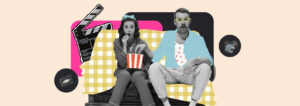Movie marketing campaigns have to be creative; they have to stand out and get through the noise that surrounds the film industry.
When it comes to releasing a new film, traditional advertising methods (think movie posters, giant billboards etc) just won’t cut it. There’s so many new releases in one year, that you need to make sure yours is seen.
The more audiences are talking about it, the more likely they are to come and see it.
Think about some of the big movie releases in the last few years and what made people so excited. To name a few:
- Barbie vs Oppenheimer
- Inside Out and Airbnb
- The Blair Witch Project
But what do they all have in common? They got people talking.
So when you’re trying to market a new film release, you’ve really got to think outside of the box.
Consider what draws people to making a trip to the cinema. Is it the fear of missing out or curiosity about the plot?
The movie marketing campaign really is just as important as the movie itself, because if no one is interested in it, the cinema screening is gonna be pretty empty.
We’re exploring some of the best movie marketing campaigns below and what you can learn from them in your own marketing efforts. These takeaways aren’t limited to the film industry – but rather good starting points for how you can stir up interest in your own brand.

Barbie vs Oppenheimer
If you’ve not heard of the Barbie vs Oppenheimer contest, you must be living under a rock!
The release of these huge blockbuster movies on exactly the same day (21st July to be exact) caused a few ripples in the industry.
Why?
Because surely two huge films going head-to-head meant they were competing against each other? And that meant only one film could come out on top?
However the reality was quite the opposite. By releasing two very different films on the same day – one very serious about the atomic bomb, and the other a lighthearted film championing females – it showed audiences that the film directors understood their different interests.
After all, why should we be shoe-honed into one particular genre? Are we not allowed to enjoy both?
Well that’s exactly what happened. People were seeing one film in the cinema, then straight after, going to see the other. This meant neither of the films lost out, and instead, shared an audience that appreciated being able to enjoy both.
Margot Robbie (who played Barbie) and Greta Gerwig (Director of Barbie) even posted photos of themselves buying tickets to see Oppenheimer, again emphasising that this wasn’t a battle or a competition as they were supporting the film.
The whole ‘Barbenheimer’ campaign also led to some fantastic memes – just imagine the juxtaposition between pink, girly fashion, and bombs exploding …

Inside Out 2 and Airbnb
Ahead of the release of Inside Out 2, Airbnb offered fans the chance to stay at Team Riley Headquarters in Las Vegas.
For those of you who haven’t seen Inside Out, this is the control centre where Joy, Anger, Disgust, Sadness, and Fear help Riley manage her emotions.
As Riley changes into a teen, she’s got a whole new set of emotions to manage too (think Anxiety, Embarrassment, all that fun stuff) so it’s a bit of a whirlwind. Well, for a limited time only, Airbnb recreated HQ allowing visitors to get behind the control panel for themselves to see what makes each emotion tick.
They could also play a series of games and have a go in the air hockey room (Riley’s favourite sport) allowing them to relive the film and create their own memories.
It’s such a clever movie marketing campaign as it’s immersive. By getting behind the control panel for themselves, audiences feel like they’re really part of the movie. The room also looks really cool too, leading to some great photos and video content to promote the stay on social media.
And you just know that once one person has stayed here and posted a photo, everyone is going to be envious!
By offering this for a limited time, it also creates the fear of missing out as film fans know they’ve got to be quick to stay there. This emphasises the importance of building a buzz ahead of the film and also offering fans something that feels exclusive.
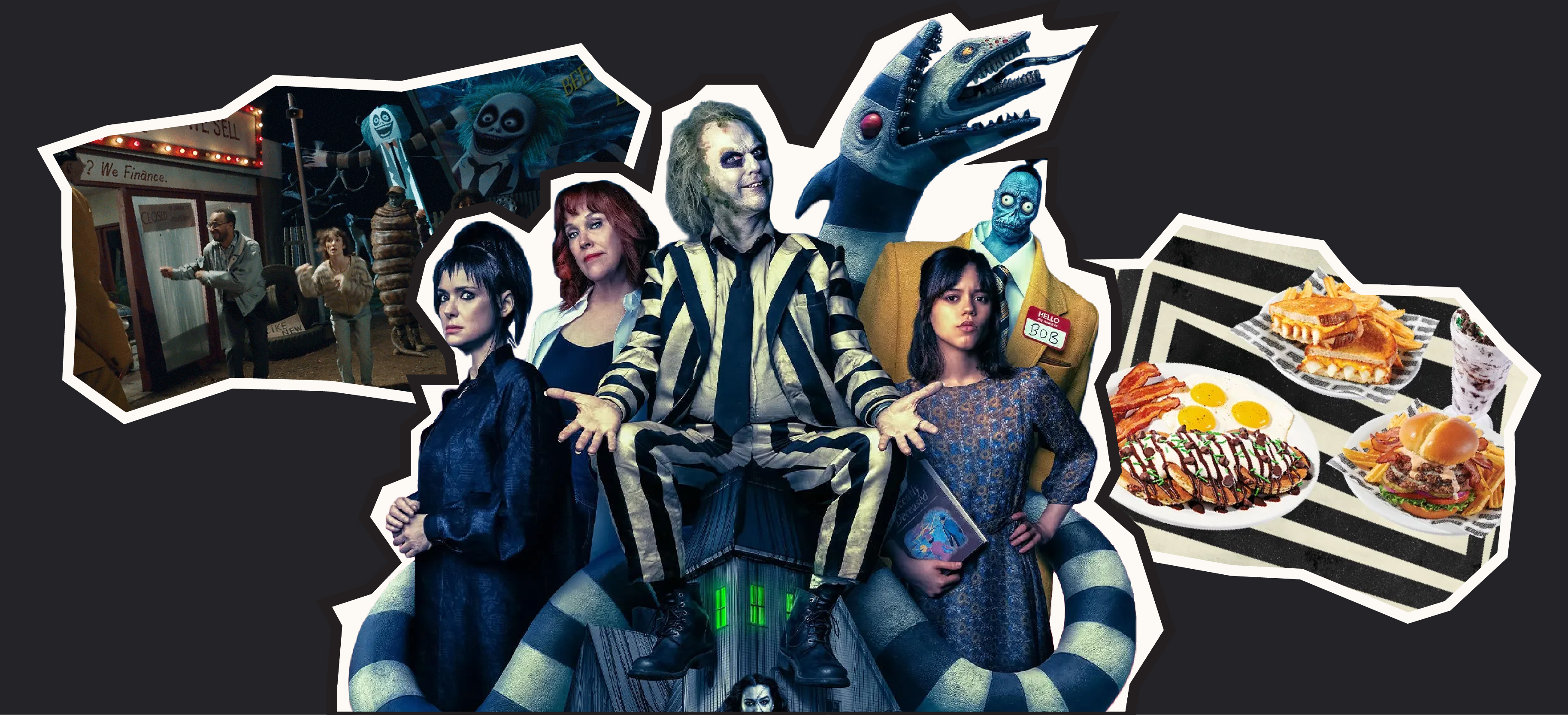
Beetlejuice 2
Whilst brand partnerships are certainly nothing new (take Barbenheimer as the perfect example) Beetlejuice 2 had a lot – 35 in total!
The partnerships spanned various brands including Fanta, CarMax, and Dennys. We don’t have time to go into the details of all 35 but we’ll take Denny’s as an example.
In keeping with Beetlejuice Beetlejuice’s undead theme, Denny’s restaurant brought its Value Menu back to life and dubbed it the ‘Afterlife Menu’. Diners can order from this and enjoy themed dishes like the Say It Three Times Slam, Afterlife Melt, Beetlejuicy Burger, and Cookies and Scream Shake, with prices ranging from $2 to $10.
This brand partnership works because it blends both brands’ identities. Denny’s taps into the quirky, spooky fun of Beetlejuice, drawing in fans of the movie, while Beetlejuice-themed meals create a memorable dining experience.
The promotional videos, featuring Shrinkers as less-than-helpful employees also reinforce the playful tone of the brand collaboration.
Moving over to their partnership with used car retailer, CarMax, they tapped into the excitement surrounding the movie release by leaning on the concept that sometimes ‘the best way to appreciate doing things the right way is by showcasing the wrong way.’
The retailer does this through a clever campaign called “BeetleMax: The way Car Buying Shouldn’t Be’ which features a 90 second ad showing a family’s hesitant journey through the spooky car dealership.
The family repeats “BeetleMax” three times, triggering a rendition of the iconic “Day-O” song, but with a twist that highlights CarMax. After chanting “CarMax” three times, they’re transported to a CarMax dealership, where they quickly find their next car.
This is an effective partnership because it merges Beetlejuice’s famous elements with CarMax’s core message, making it both entertaining and memorable.
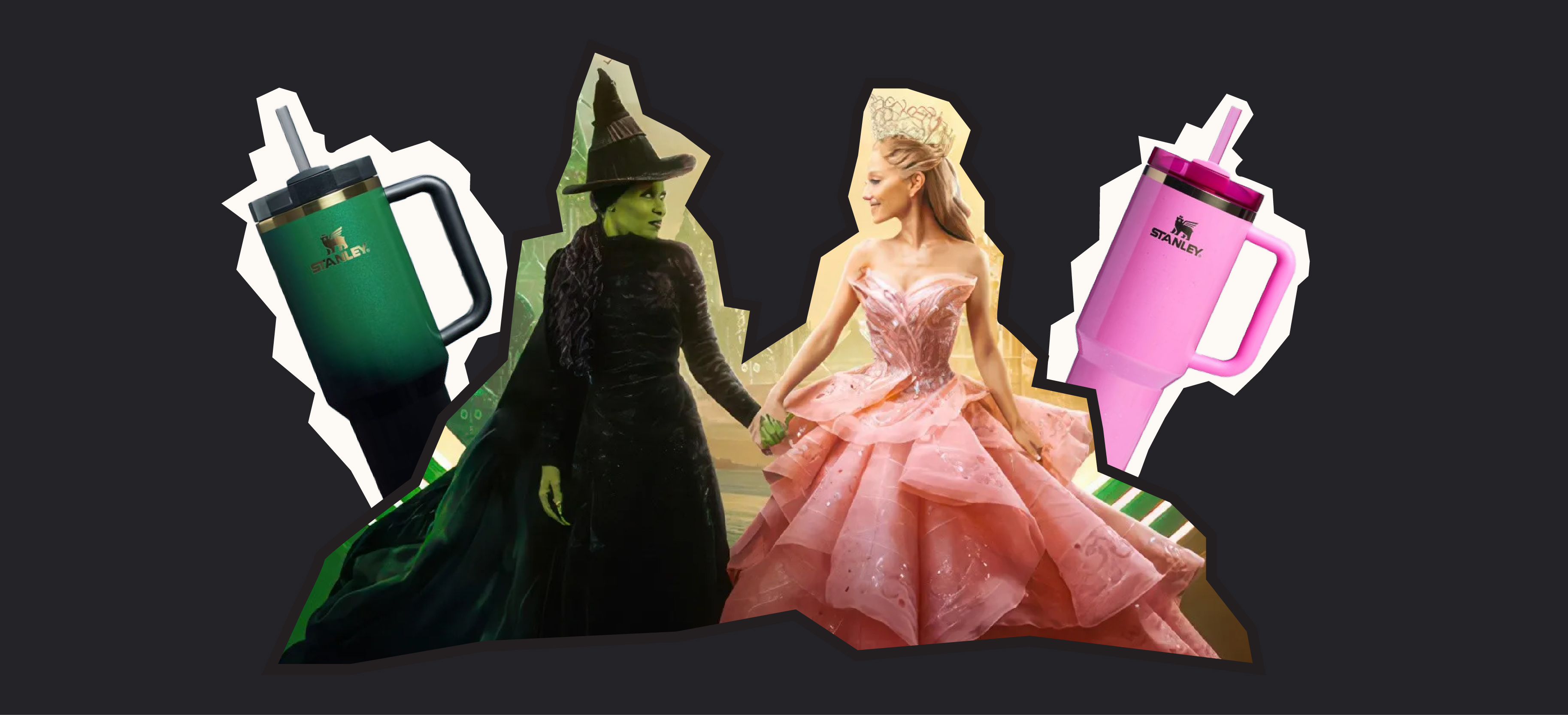
Wicked and Stanley Tumblers
Combine the upcoming release of ‘Wicked’ and Stanley Tumblers and you’ve got a match made in heaven.
This collaboration revolves around Stanley Quencher cups, the design of which has been inspired by the musical – but for a limited time only. They were released in partnership with Target and customers went crazy to get their hands on them.
The designs featured vibrant Elphaba green and Glinda pink and were available in 40-ounce and 20-ounce sizes.
The drop was perfectly timed to coincide with the upcoming Wicked film set to release in November 2024. They were of course a huge hit and sold out very quickly both online and in stores.
Some fans even queued early just to grab one, making sure they didn’t miss out on this exclusive launch.
The excitement surrounding the brand collaboration highlights the power of two brands coming together, tapping into popular culture fandoms and drawing both Wicked fans and Stanley collectors to the Target store.
As with many Stanley releases, the resale market has gone wild. The limited-edition tumblers are being resold for as much as $400, showing how much fans are willing to pay to feel part of this collaboration. The high demand and resale prices not only reflect the popularity of the Wicked-themed designs but also the value of scarcity.
This is another example of an effective brand partnership as it’s allowed Stanley to maintain strong consumer interest amidst growing competition.
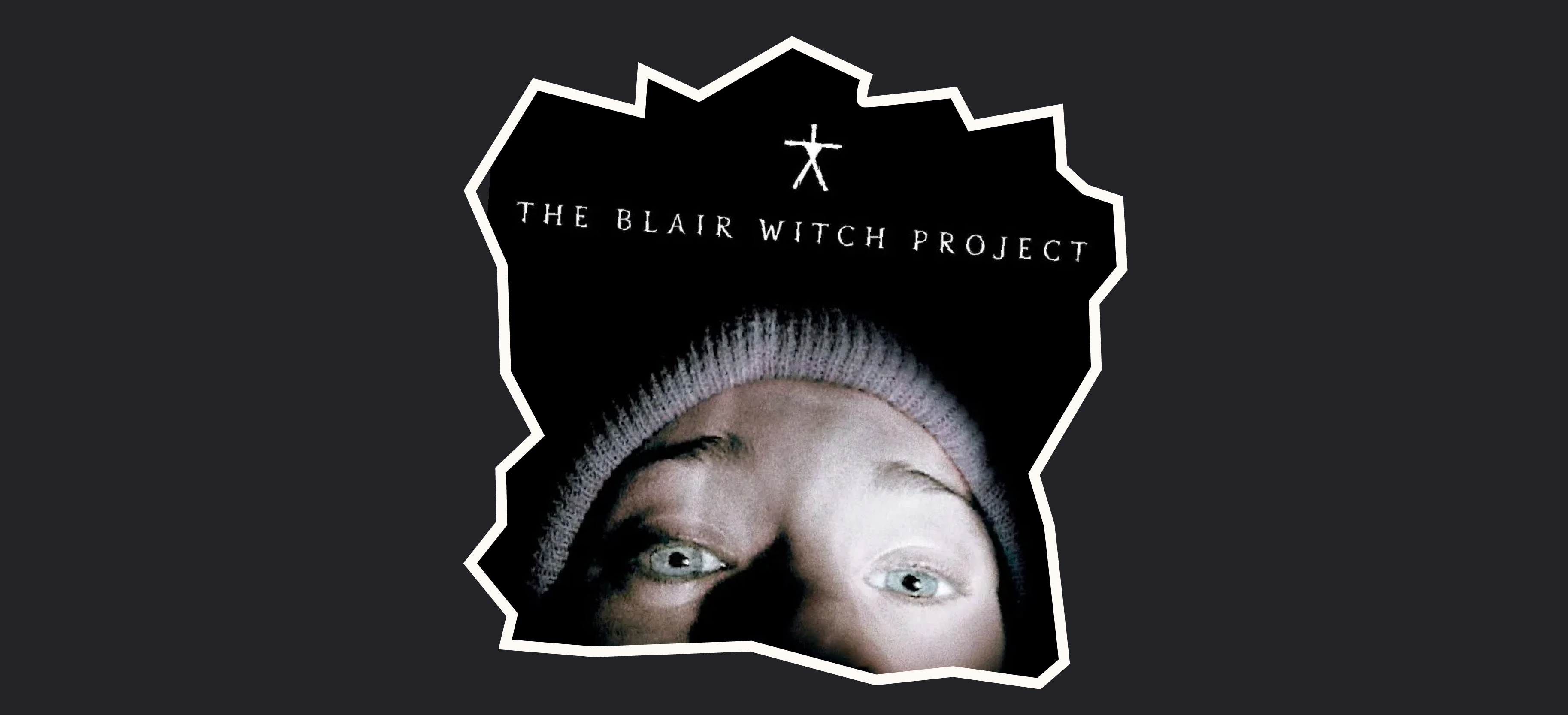
The Blair Witch Project
We’re going back to 1999 with this one, but we can still learn from the clever tactics used today.
As a bit of an overview, the movie is about 3 young filmmakers who go looking for the Blair Witch – an urban legend in the remote town of Maryland. The idea being that they want to record some footage so they can prove to people the Blair Witch is actually real.
However the three students go missing, and their recorded footage is found 10 years later on. This first-hand footage forms the movie, and the fact it’s filmed in low quality and first person adds to the authenticity that this is actual footage.
It’s this concept of real vs fake that the directors leant on to promote the film and get audiences interested. They built a whole narrative around the fact the students actually went missing by using this footage throughout as if it’s being told from their perspective.
There’s lots of other clever marketing tactics they use to stir up interest and to create a deep sense of curiosity about what actually happened:
- Missing person leaflets – they wanted viewers to question whether the students had actually gone missing and if they were dead or alive. So they created missing person leaflets which they distributed among the public, kick-starting the conversation about where the students had actually gone – similar to a real missing persons case.
- Their own website – Now the internet was in its infancy back in 1999 but this actually helped fuel the authenticity of the campaign. The producers kept the website plain and minimal as though it had been created by the students adding to the low budget theme. They used this platform to tell the myth and stories of the Blair Witch creating a sense of fear and confusion for audiences.
- Documentary and trailer – The trailer was purposefully minimal, showing brief clips to stir curiosity while avoiding mainstream outlets to maintain its low-budget vibe. This was supported by a Sci-Fi Channel mockumentary and niche college screenings to further the film’s authentic feel.
- Magazine ads – After opening weekend, the marketing team took out a full-page ad in Variety magazine, but instead of highlighting box office numbers, the ad read: “blairwitch.com: 21,222,589 hits to date.” The ad, placed in a traditional space, was minimalist and raw, reflecting the film’s style and driving more traffic to the website.
This movie marketing campaign was a resounding success and is still classed by many, as the greatest of all time.
What made it so unique was how heavily the producers blurred the lines between fiction and reality. They made audiences feel part of the plot, and as though the more details they found out about the missing students, the more they were contributing to solving the puzzle.
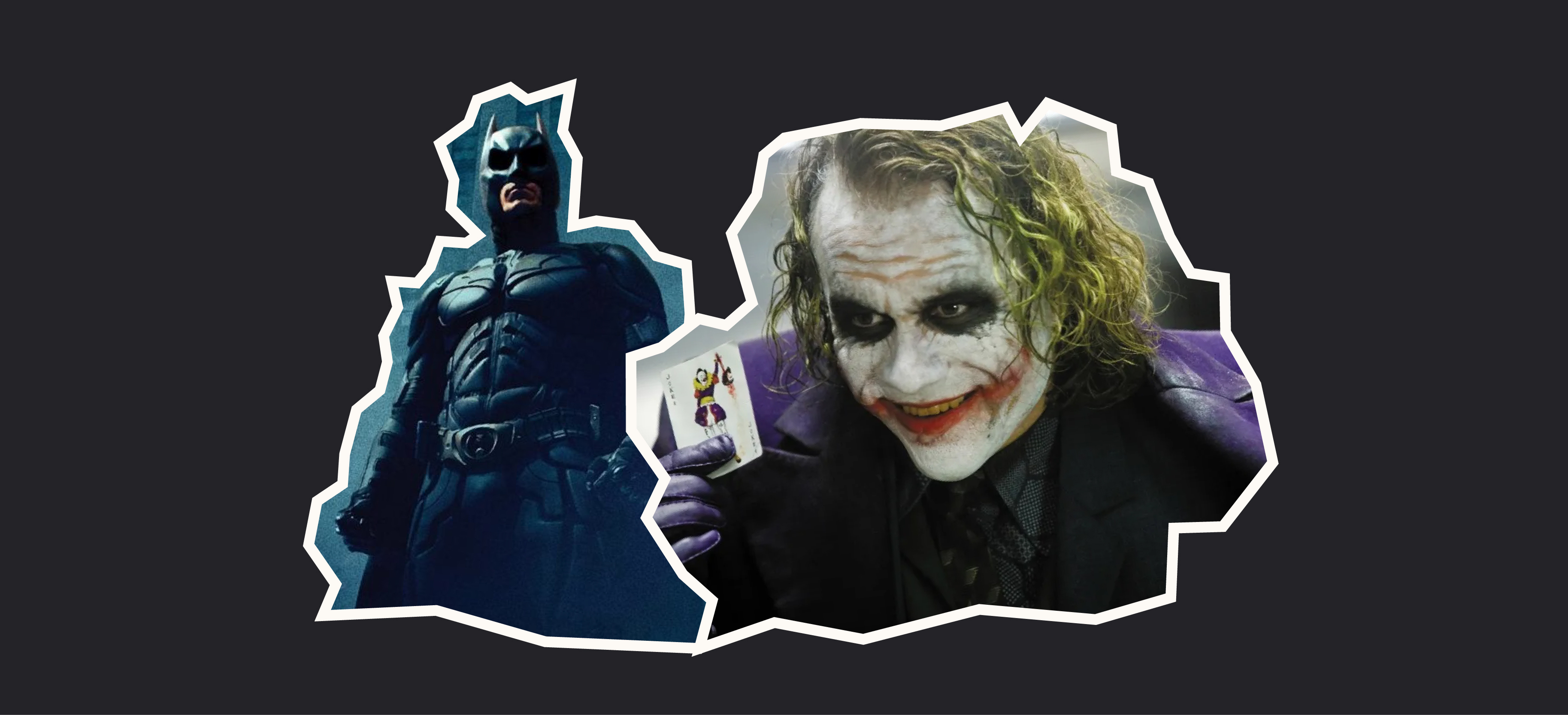
The Dark Knight
In 2008 ahead of the release of the Dark Knight, Warner Bros created one of the most effective and immersive viral marketing campaigns.
The concept was built around letting fans experience Gotham City and the world of Batman.
Firstly they created an integrated Gotham universe, an online ecosystem that involved the creation of several websites, each one centred around different aspects of Gotham such as Gotham National Bank and The Gotham Times. Fans were then able to explore these websites as if they were real places.
They also gave the Joker his own viral environment by creating a website with the url: whysoserious.com which took fans on a real-world scavenger hunt.
These hunts took place in different cities, and gave fans the chance to become part of The Joker’s gang. They could find things such as defaced money or graffiti pointing to future developments in the film and deepening their connection to the story.
The Jokers iconic tagline “Why So Serious?” was also threaded throughout the whole campaign, from the URL to posters and merchandise, setting the scene for the film.
This movie marketing campaign went beyond traditional trailers and posters, creating an exciting and immersive experience so that fans felt like they were in the film.
The Greatest Movie Marketing Campaigns & What You Can Learn
Movie marketing campaigns are just as important as the movie.
A not-so-great film can build so much anticipation and excitement by considering its approach to marketing, whereas the best film in the world can fall flat on its face, if the importance of marketing is understated.
The key takeaways from all of the movie marketing campaigns we’ve covered in this blog, is that you need to get your audience talking.
Viral marketing is important as the more people are talking about it with their friends or colleagues, the more likely people are to book tickets. The likelihood of them doing this off the back of a traditional poster is slim as there’s so many movie releases to choose from.
So get creative, spark people’s interest and make them feel something with your movie marketing campaign.
And if you need any help with your marketing, get in touch with our team! From SEO, to blog content, to Google Ads, we can drive leads for your business.

